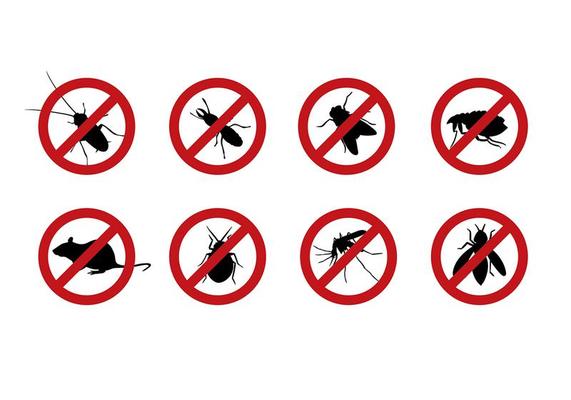Discovering Problem and Therapy Approaches on the planet of Insect Control
The landscape of insect control incorporates a myriad of obstacles, specifically as problems of common family insects remain to advance. Recognizing the habits and reproductive patterns of these hassles is essential for developing efficient treatment approaches. By integrating safety nets with innovative administration strategies, such as Integrated Pest Management (IPM), house owners can better protect their atmospheres. The performance of these techniques might differ substantially based on specific scenarios. What hidden elements add to the success or failing of these techniques in various setups?

Common Household Pests
When it pertains to managing our space, understanding typical home parasites is vital. These pests not only disrupt our comfort however can also present health and wellness risks and damage building. The most prevalent household bugs include ants, cockroaches, rats, termites, and bed insects.
Ants, usually seen foraging in kitchen areas, can pollute food and establish large nests. Rats, consisting of mice and rats, can create structural damage and lug diseases like hantavirus and salmonella.
Acknowledging the signs of these bugs, such as droppings, nests, or attack marks, is essential for early intervention (Pest Control Lockhart). Correct cleanliness techniques, securing entrance points, and maintaining a clutter-free setting are effective preventative measures. By determining these common family pests and comprehending their actions, home owners can take proactive steps to reduce invasions, ensuring a much healthier living environment
Comprehending Insect Infestations
Bug invasions can escalate rapidly, turning a small annoyance right into a substantial issue if not attended to quickly. Common aspects adding to invasions consist of inadequate cleanliness, structural vulnerabilities, and seasonal changes that drive bugs inside your home.
Identifying the kind of parasite is crucial, as various types display varied actions and reproductive prices. Rats may develop nests in covert locations while bugs like cockroaches prosper in wet environments. Early discovery often depends upon acknowledging signs such as droppings, chomp marks, or unusual noises, which can show a trouble before it comes to be serious.
Warm, moist climates can help with the rapid growth of pest populations, while adjustments in landscape design or construction can inadvertently develop conducive environments. An educated method to recognizing these characteristics lays the groundwork for effective bug administration methods in the future.
Therapy Techniques and Techniques
Reliable treatment techniques and methods are important for alleviating parasite invasions and recovering a risk-free setting. A multifaceted method is typically best, incorporating chemical, biological, and mechanical approaches customized to the certain parasite and the intensity of the problem.
Chemical therapies include making use of pesticides and herbicides, which can effectively eliminate bugs. However, correct application and adherence to safety guidelines are important to minimize threats to humans and non-target organisms. Integrated Pest Management (IPM) urges the wise use chemicals as a last option, depending rather on surveillance and limit levels to identify treatment requirements.
Biological control techniques involve presenting natural killers or bloodsuckers to minimize parasite populaces. This method is progressively popular, specifically in farming setups, as it advertises environmental sustainability.
Mechanical approaches, such as traps and barriers, provide instant remedy for bugs without introducing chemicals. Options include sticky catches for insects or physical obstacles for rodents.
Inevitably, the choice of treatment technique should consider the details bug, the setting, and prospective influences on human wellness and ecosystems. A balanced combination of these approaches can effectively manage infestations while promoting lasting bug control solutions.
Preventative Steps for Homes
Proactively resolving pest issues before they escalate is essential for keeping a healthy home setting (Pest Control Lockhart). Carrying out efficient safety nets can dramatically lower the possibility of invasions, ultimately securing both your home and wellness

Appropriate landscaping likewise plays an important function in avoidance. Maintaining bushes and trees trimmed away from your house decreases the opportunities of parasites locating their means inside. Guarantee that water drainage systems are operating successfully to protect against standing water, which can draw in mosquitoes and various other pests.
Lastly, regular inspections are recommended. Routinely looking for indicators of insect activity permits early intervention. By taking on these safety nets, property owners can produce a setting that is less congenial to bugs, therefore boosting their general quality of life and decreasing the demand for extensive bug control interventions.
Business Bug Control Techniques
A thorough strategy to industrial parasite control is important for companies intending to preserve a risk-free and hygienic environment. Reliable techniques entail a mix of routine evaluations, worker training, and the execution of Integrated Parasite Management (IPM) techniques.
Routine evaluations dig this allow early here discovery of pest task, enabling for timely treatment. Businesses ought to establish a regular timetable for these evaluations, focusing on high-risk locations such as kitchen areas, storage space spaces, and garbage disposal websites. Employee training is just as critical; staff must be informed on the indications of parasite infestations and the value of reporting them promptly.
Applying IPM techniques helps alleviate insect issues sustainably. This includes environment adjustment, such as sealing entry points and decreasing mess, in addition to using all-natural deterrents before resorting to chemical therapies.

Furthermore, working together with a qualified insect control provider guarantees access to expert understanding and advanced treatment choices. This partnership can bring about customized pest control prepares tailored to the details requirements of business, decreasing risks and improving total efficacy. Ultimately, an aggressive and enlightened technique promotes a pest-free setting, securing both public wellness and company credibility.
Final Thought
In final thought, efficient parasite control requires an extensive understanding of usual household pests and their actions, combined with targeted treatment approaches. Applying preventative steps along with treatment methods such as Integrated Insect Monitoring and biological control over at this website improves the capacity to alleviate problems.